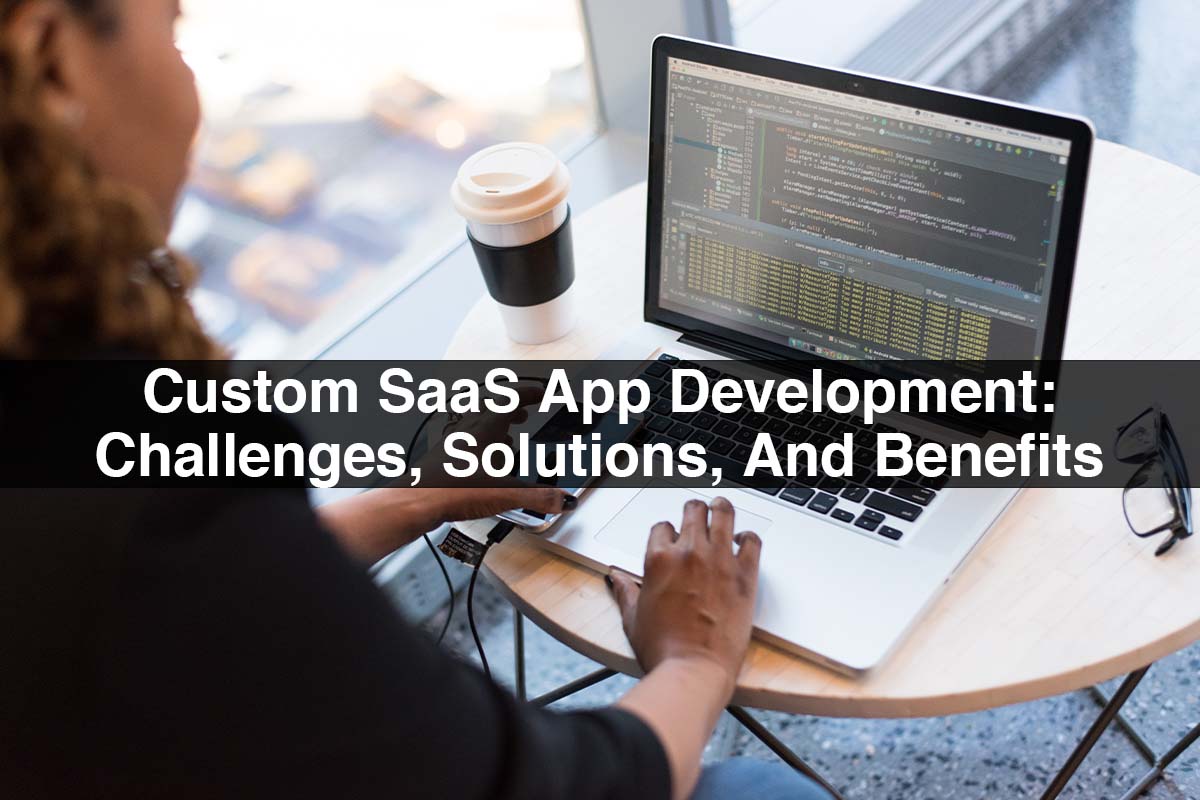Custom SaaS App Development: Challenges, Solutions, And Benefits
The use of web-based software program to carry out every day enterprise capabilities is a rapidly growing trend. Software-as-a-Service has demonstrated to be incredibly useful for lots of companies throughout all industries.
SaaS
SaaS is a cloud based software delivery model where the cloud service provider develops and manages the cloud application, provides automated software updates, and makes software available to their customers through the internet on a pay basis.
SaaS infrastructure development of apps
SaaS app development is the development of applications with cloud features. It consists of creating documentation, designing, developing, testing and deploying on the server. A SaaS application can be accessed through a browser or through an app.
Custom SaaS development
Custom SaaS development allows businesses to access applications over the Internet and eliminates the need for expensive and complicated hardware and software management.
SaaS applications examples
- Dropbox.
- Zoom.
- Netflix.
- Gmail.
- Office 365.
Challenges and solutions for developing SaaS applications
-
GDPR compliant
With the GDPR regulations taking up the world and general tenants protection, secure database design is a important a part of a successful SaaS product. On pinnacle of that, with projects for the American clients, there are unique systems like for medical industries that we want to take extra steps and follow the HIPAA constraints to the system that make sure that patient’s information do not leak outside of the system boundaries.
-
SaaS subscription
The best way to control subscription structures is to apply predefined solutions for payment scheduling and subscription management.
-
Customizable system
The system is intended to be fully customizable, from the interface to the underlying levels of the system. The customization is generally determined by our customer or a product owner.
-
No-Downtime deployment
Traditional systems, while performing an update, will notify users about downtimes. However, since most Software as a Service platforms are fully online, maintenance teams are adopting a zero-downtime implementation strategy.
-
Third-party payment
The payment is usually achieved by integrating a system with a third-party payment service. Integration has the easy way and the hard way. The easy method is a payment service with amazing integration support. The most difficult is where the development team examines the technical elements and challenges with integration of payments and development of the right parts of the application to perfectly integrate the external payment service.
Advantages of developing applications
-
Lower upfront costs
Software as a Service eliminates the upfront cost of purchasing and installing conventional software. Businesses can save on ongoing costs, including upgrades and maintenance.
-
Scalability
Using APIs, third-party enabled features are easily included in the SaaS application, making it easier to adopt superior features on the platform. User level scaling doesn’t require users to purchase software or a server.
-
Downtime
Companies save time and money by developing a custom SaaS application. Installation and maintenance tasks with conventional software can be difficult and time-consuming. When a company chooses to replace to a SaaS vendor, they could enjoy quick access to applications thru an web connection and log-in. No installation is needed and all maintenance duties fall to the vendor, removing costly periods of downtime.
-
Back-up & data recovery
With SaaS, information about a company’s IT infrastructure is efficiently installed and saved in cloud storage in a remote area. This means that even if a business is damaged, operations can quickly resume and operate from any other location in the world using the cloud concept.
-
Security
The data security specialists of custom SaaS app development team, protect and manage platforms, servers, applications and information.
-
Easily accessible
SaaS software is housed in the cloud and accessed through the internet, permitting users to make use of it from everywhere they have got a mobile connection. Users can also access their real-time data and services from anywhere worldwide.
-
Reliability
A cloud is a network of servers that can be located all over the world. Even if a server goes down, the app will stay online.
Conclusion
The maximum fantastic hallmark of web-based SaaS apps is that not only you but anyone in the world can access your data information just by logging in. This means that you no longer have to store data at the computer’s hard drive.









